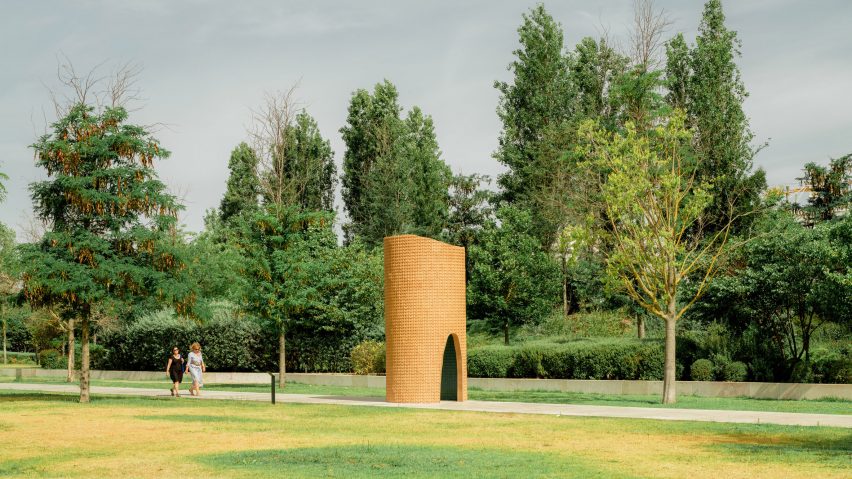
Eduardo Souto de Moura and Diller Scofidio + Renfro create cork installations for Lisbon
Eduardo Souto de Moura and Yves Béhar are among six architecture and design studios that have created cork installations for the City Cortex program in Lisbon.
Curated by Guta Moura Guedes and produced by the world's largest cork processing group, Amorim, City Cortex challenged architects to create sculptures and installations that would expand the use of cork in an urban context.
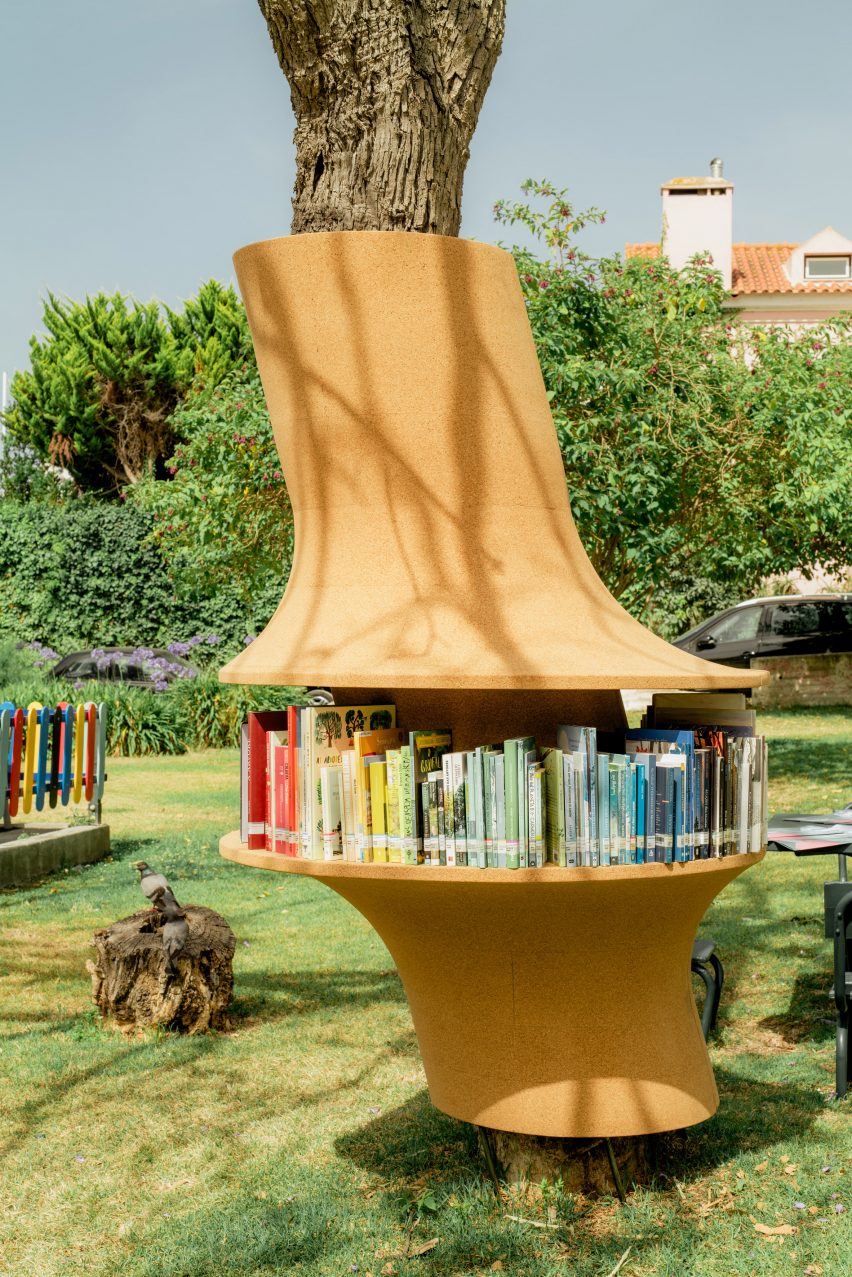
US studio Diller Scofidio + Renfro chose to create a "second skin" made from cork for a number of trees and tree trunks, which function as seating and as miniature libraries.
The collaboration with a nearby municipal library saw the architects fill the cork installations with books on different themes, with one tree holding a selection of books that can be read in one day and another holding only books on hats.
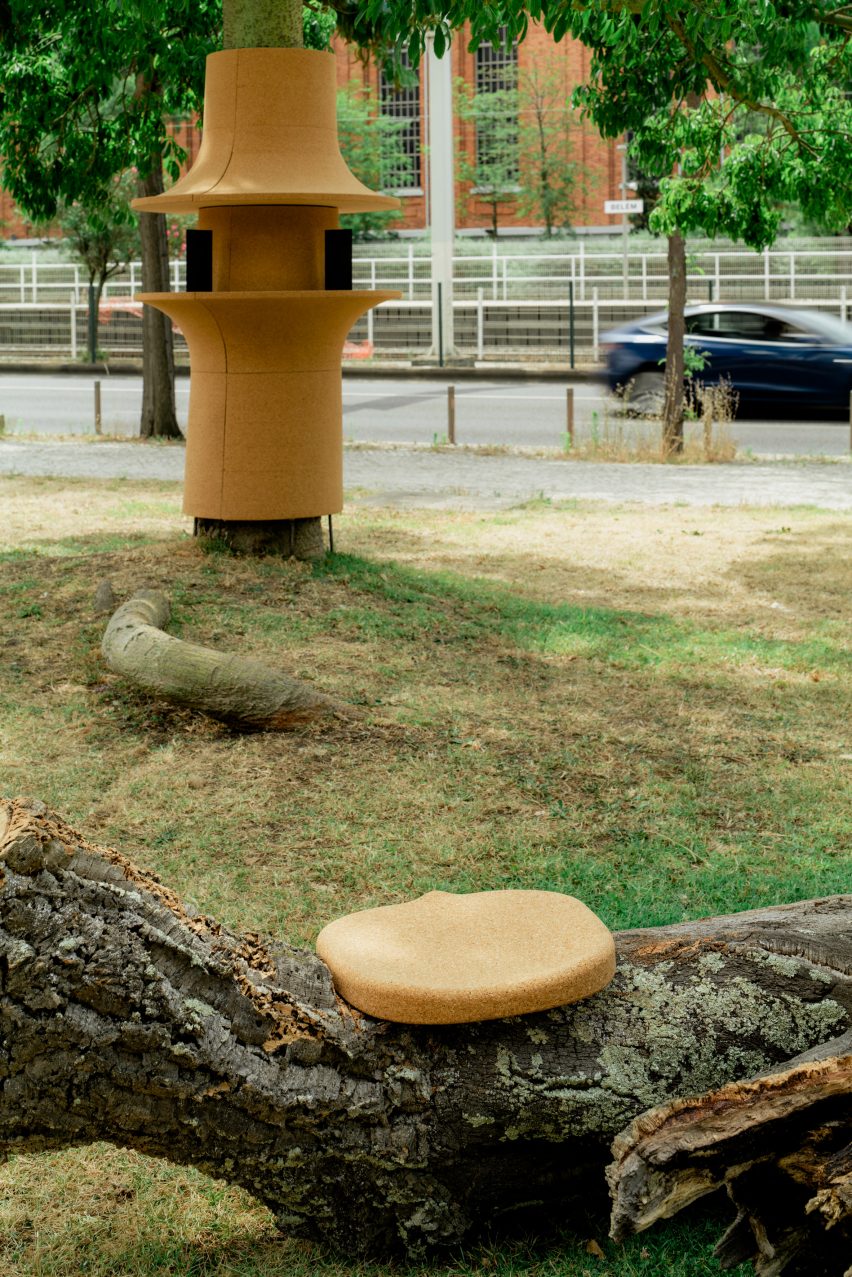
To studio co-founder Liz Diller, designing a smaller project such as this one is important in an urban context.
"For me personally, size does matter, in all different ways size matters – the design of a drinking glass is just as complex as designing something like masterplan for part of the city," Diller said at a tour of the installation.
"It's important to do things on an urban scale that has an intimacy."
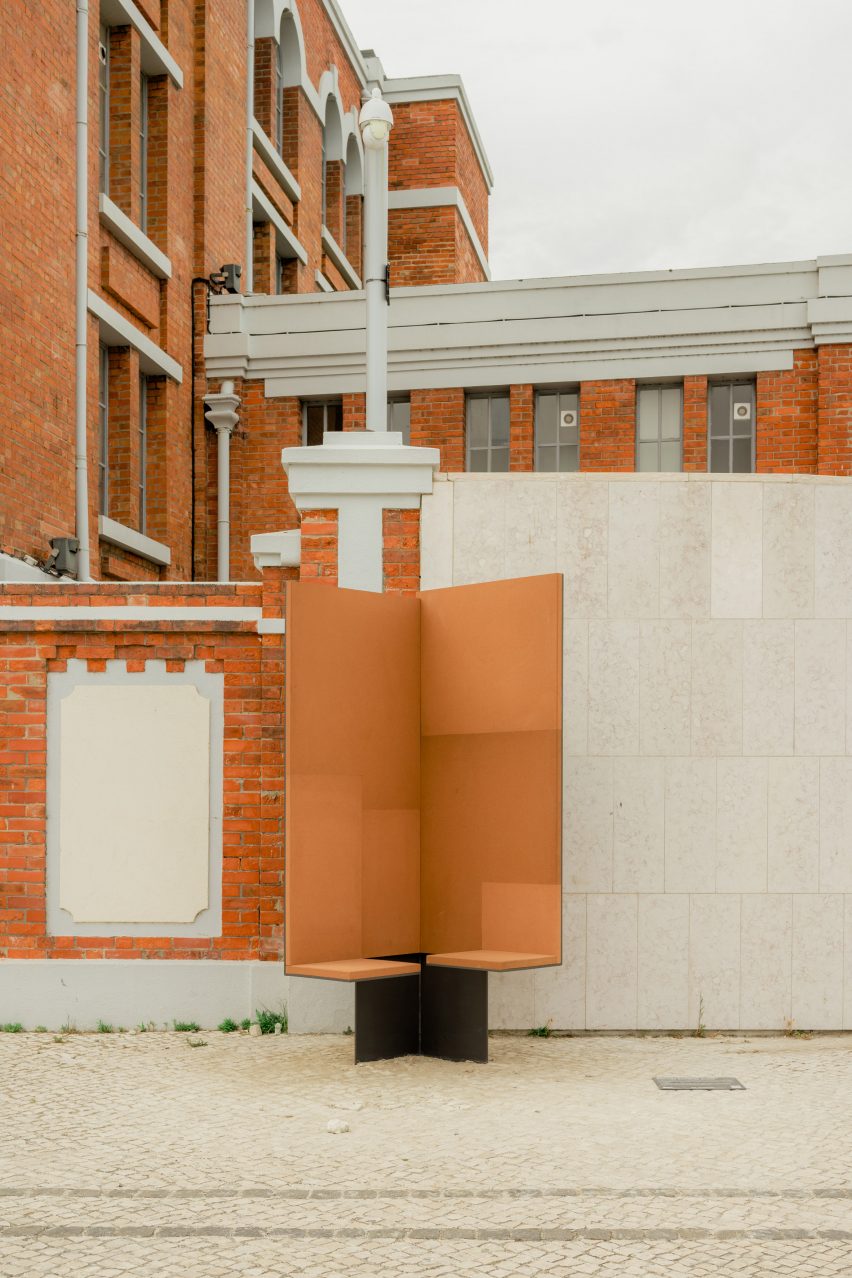
The designs for City Cortex – which was originally developed for New York in 2019 before being postponed and moved to Lisbon because of the Covid-19 pandemic – all interact with the spaces in the city.
Pritzker Prize-winner Souto de Moura's large cork chair, named Conversadeira II, has a double seat that was designed for conversation or for a "shared moment of silence," the architect said.
Located in front of Lisbon's MAAT museum, the design came about because the Souto de Mouras' first thought when he came to see the space was that he wanted to sit down, he said at a press conference for the project.
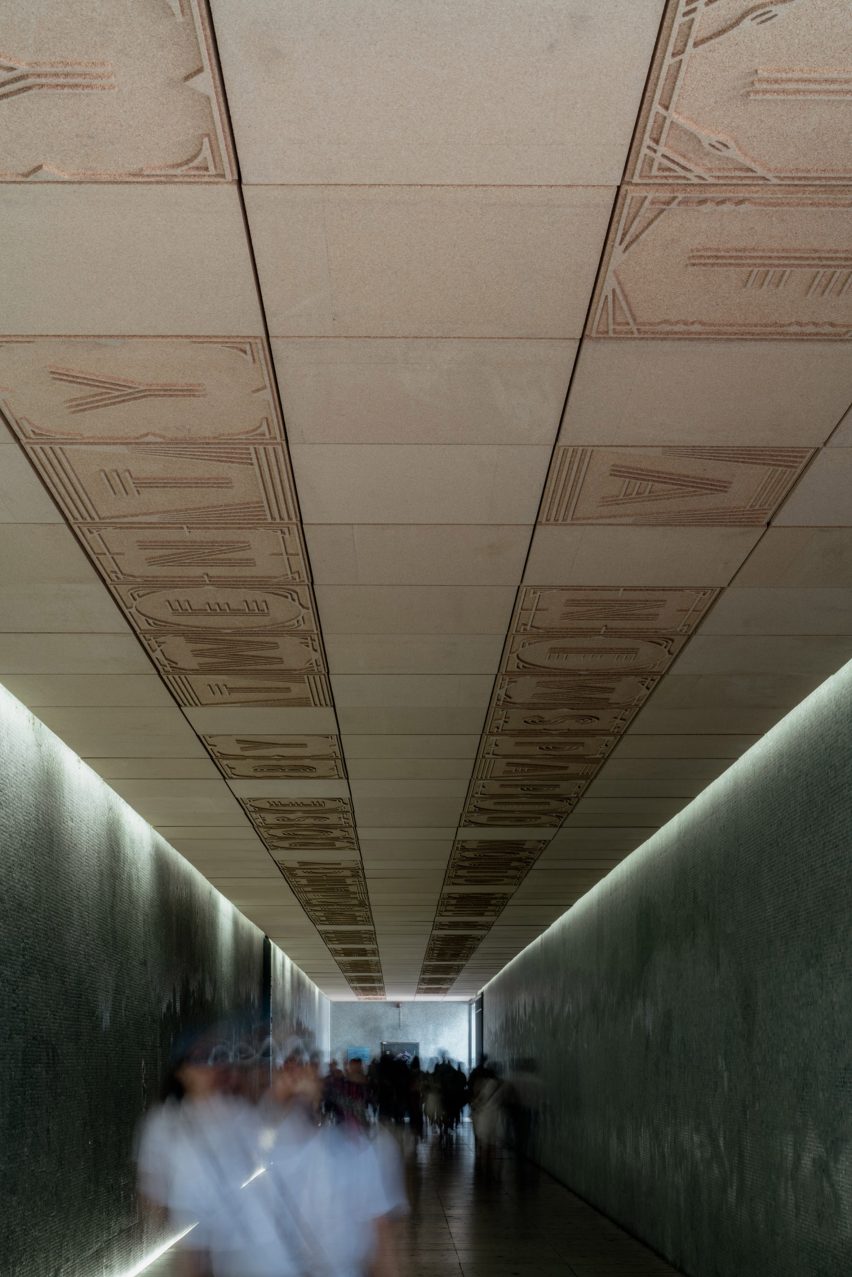
Similarly, Sagmeister & Walsh's Life Expectancy installation – designed before the studio split in 2019 – was designed to enhance the quality of one of the city's underground passages.
The studio clad the subway ceiling in patterned cork tiles that spell out "If a newspaper would only come out every fifty years, it would report how life expectancy rose by twenty years."
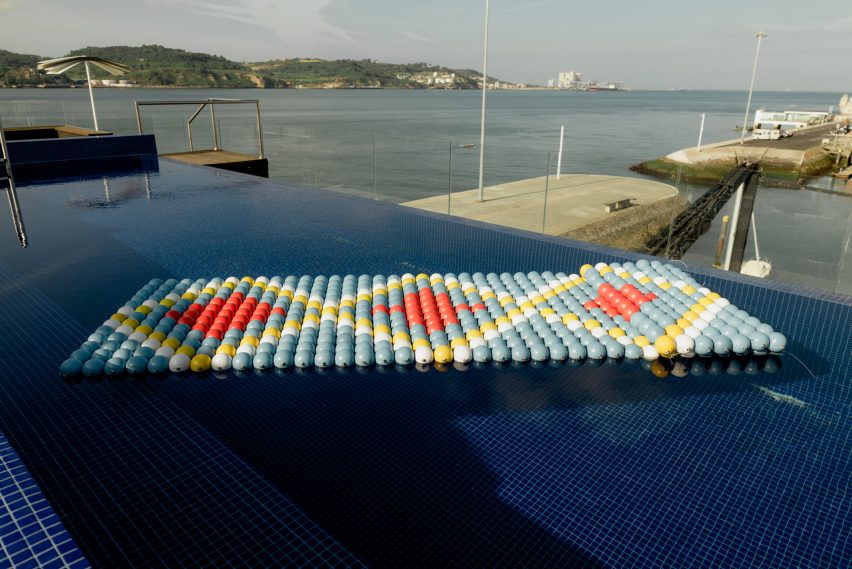
Part of studio co-founder Stefan Sagmeister's Now is Better series, the tiles aim to contribute to the well-being of visitors.
The studio also created a collection of bottles that invert the usual flask design by being made from cork but having glass stoppers, as well as a floating mattress made from cork.
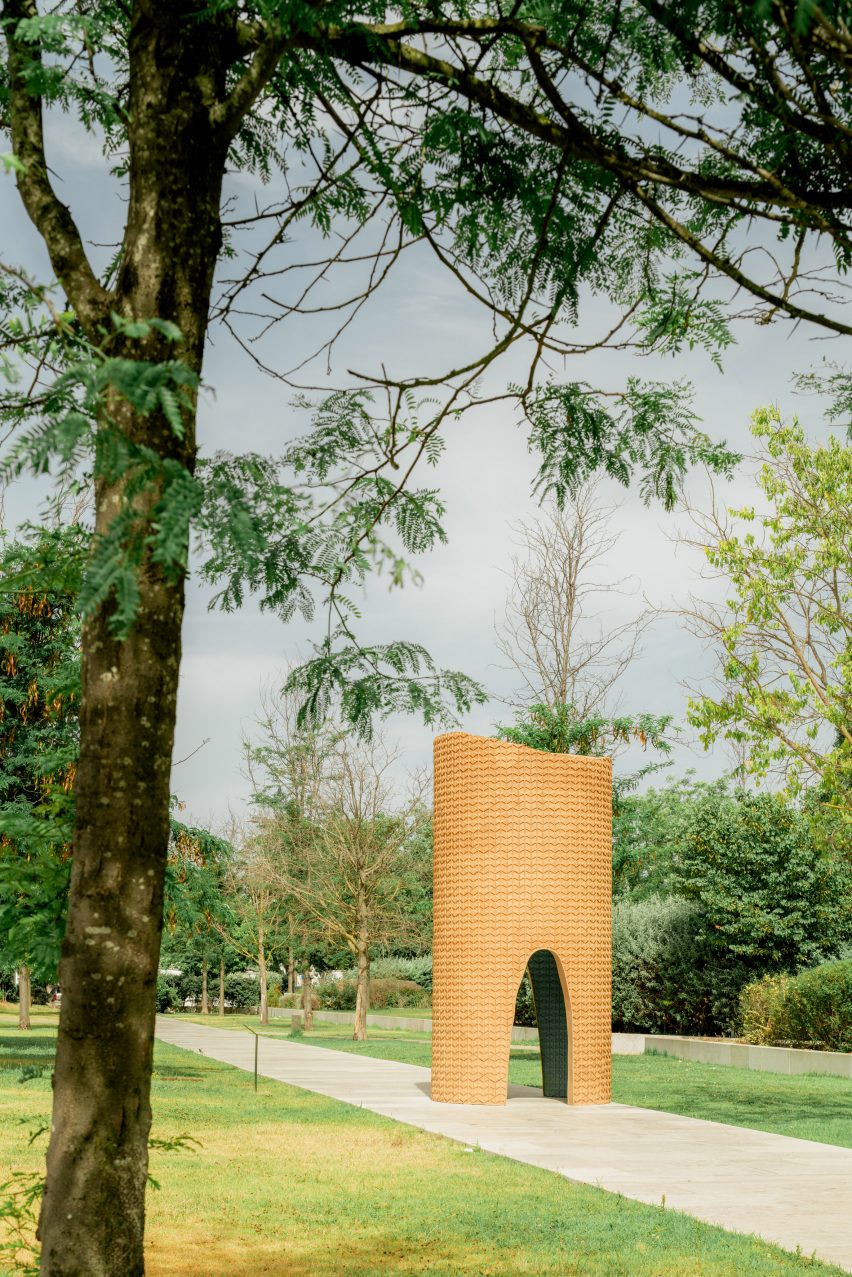
Fuseproject founder Béhar's Port_All design referenced the nearby Torre de Bélem – a 16th-century defensive tower that protected the entrance of the city.
"There's a moment of transition between being outside of the city and inside of the city, being outside of a house and inside of a house," Béhar said.
"I tried to amplify that while keeping it an open space and flowing space," he added. "You can go from the outside of the city into more of the inside of the city from there."
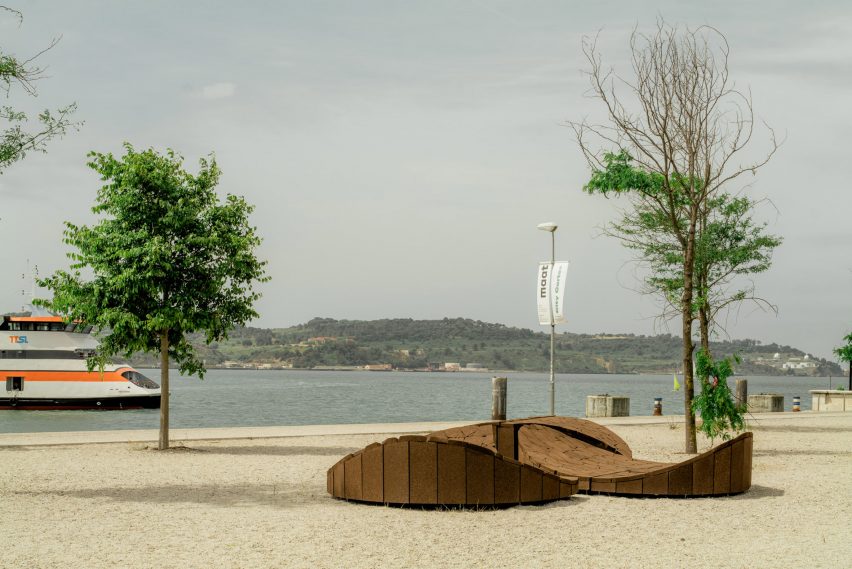
Nearby, New York-based studio Leong Leong designed Lily Pad – a group of sculptural seats made from a steel-frame clad with a natural cork agglomerate.
"We looked at the composite of the particles and really thought about how to scale up that geometry for it to become furniture," said Leong Leong co-founder Dominc Leong.
"We thought, 'what is a way to create a landscape out of particles and land this idea of urban space with a playground, maybe a more open-ended form of urban furniture?'" he added.
"The future for cities and the survival of our cities is relying on play as this fundamental human experience, of experimentation and learning."
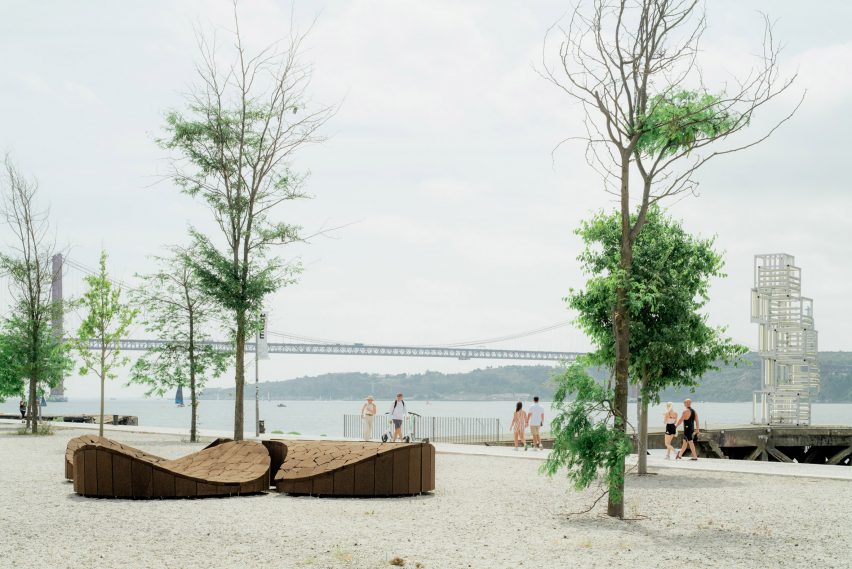
All the projects apart from one, architect Gabriel Calatrava's Onda, are located on one side of Lisbon's Rio Tejo river. Onda sits instead in Trafaria on the opposite shore, where it will remain after the City Cortex program finishes in November.
The playful pavilion features undulating tables that appear to rise up out of the cork floor and a pink ceiling comprised of multiple wave shapes.
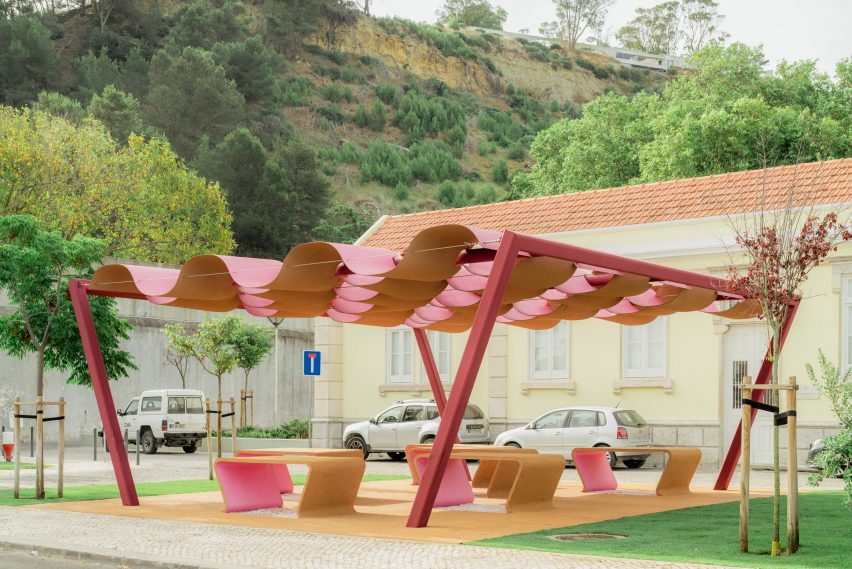
Curator Moura Guedes said her choice of architects for the installations was based on a mix of people she knows well and a passion for discovering new names.
"I like to experiment with new architects and new creatives that I don't know – in fact, the selection here was a bit moderated because I was really looking forward to working with people based in New York," she told Dezeen.
"These pieces are going to be in a public space, so I'm very curious to know how the public will respond."
The photography is by Ricardo Gonçalves.
City Cortex is on show in Lisbon, Portugal, from June to November 2024. See Dezeen Events Guide for more architecture and design events around the world.